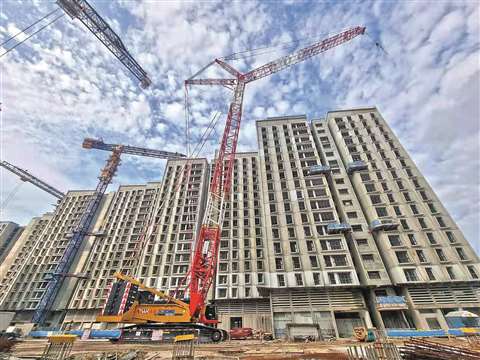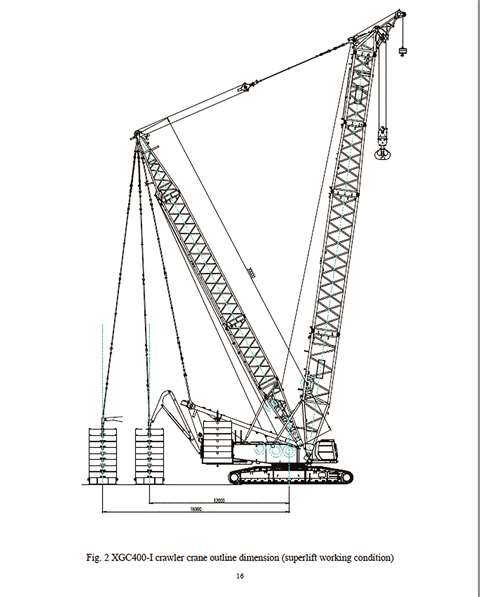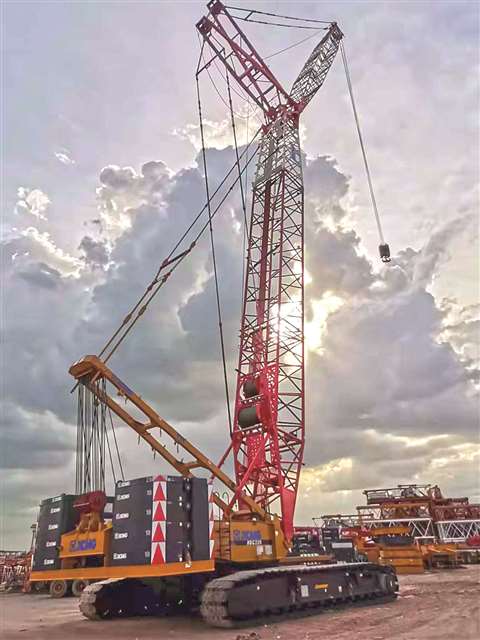How did crawler cranes tackle PPVC project in Singapore?
20 February 2023
Instead of employing the usual heavy lift flat top tower crane for PPVC construction, a different lifting solution was chosen for this project in Singapore. Alex Dahm reports.
 New PPVC solution: a 400 tonne capacity XCMG model XGC400-I crawler crane completed a PPVC mission in Singapore
New PPVC solution: a 400 tonne capacity XCMG model XGC400-I crawler crane completed a PPVC mission in Singapore
South East Asia is still where you find the most widespread application of the PPVC (prefabricated pre-finished volumetric construction) method but it is spreading to other parts of the world.
Most projects are residential apartment buildings and hotels but the method lends itself to other applications.
Fundamental to the lifting work is usually high capacity top slewing tower cranes, typically flat tops of 50 tonnes capacity, or more, and with relatively short booms of 35 or 40 metres.
Which crane was chosen for the PPVC lift?
A different lifting solution was chosen for this government PPVC project in Tampines, Singapore. It was a 400 tonne capacity lattice boom crawler crane.
 The XGC400-I with the superlift counterweight at 12 and 16 metres radius.
The XGC400-I with the superlift counterweight at 12 and 16 metres radius.
Singapore-headquartered lifting and specialized transport service provider Tiong Woon supplied the XGC400-I made by XCMG from China.
It handled all the precast concrete elements to complete the hoisting and installation of the multitude of modules, each weighing up to 40 tonnes, making up the apartment building for the Housing Development Board (HDB).
Modular construction and PPVC in particular is becoming increasingly popular, largely because such precast buildings are economical, safe, long lasting and quick to build. Most Singapore government projects of this type will be built in this way.
Expect to see a large number of low cost economic apartments built from precast concrete modules in major cities.
 XCMG gives a maximum load moment rating of 5,200 tonne-metres in superlift configuration
XCMG gives a maximum load moment rating of 5,200 tonne-metres in superlift configuration
The XGC400-I has an infinitely variable superlift function for luffing which is especially useful in this and many other applications, the manufacturer says.
The superlift mast is 30 metres long, including a bottom section, a 6 metre section, one at 12 metres and a top section.
It has an automatically controlled hydraulic backstop. Maximum superlift counterweight is 230 tonnes.
A typical single lift for the crawler crane on this project in Singapore was to hoist, position and precisely place an entire pre-built room in one operation.
It was configured with a standard main boom and jib combination of 54 + 54 metres. At that the capacity was 60 tonnes and the longest radius available was 70 metres.
What were the benefits of using a crawler crane?
The most obvious benefit of using a crawler crane is saving construction time, explains Jingling Yang, product manager at XCMG.
Assembly speed for the crane is one of the essential requirements for HDB since the construction time for the building is only three months, says Yang.
“The XGC400-I was assembled in only two days, which was ahead of schedule. It greatly reduced the time cost. Our crawler crane impressed our customer, Manikumar, with its high efficiency,” Yang says.
Power for the XGC400-I is from a 338 kW straight six Weichai WP12 turbo diesel. Hydraulics are Rexroth and it has a Wika LML.
STAY CONNECTED


Receive the information you need when you need it through our world-leading magazines, newsletters and daily briefings.




